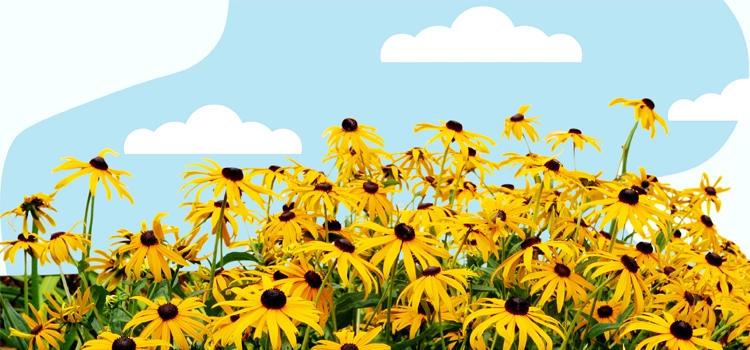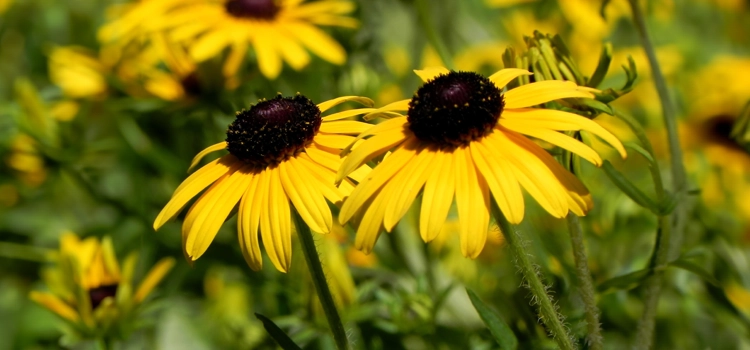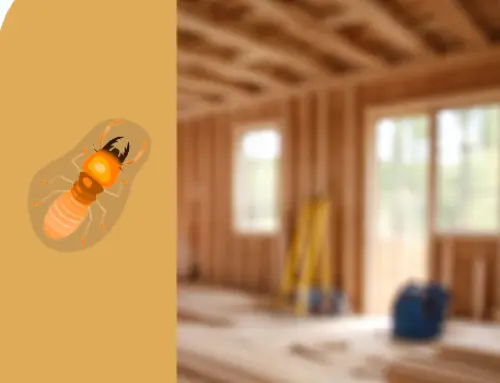Black Eyed Susans: What Midwesterners Need to Know
by Jenna Mendez
6 min read

Nestled in the heartland of America, the Midwest boasts a unique charm. Often renowned for vast fields, rolling plains, and a rich agricultural heritage. Among the tapestry of its flora, one flower stands out as a symbol of resilience and beauty: the Black-Eyed Susan. With its golden petals and dark centers, this iconic wildflower is a treasure and common to the Midwest.
If you live within or in neighboring states of the Midwest, you’re bound to have a Black-Eyed Susan poke through your soil. If you’re interested in how to care for this Midwest beauty, look no further. We’ll cover everything you’ll need to know for their care and more!
Key Points of This Article:
- Black-Eyed Susans are native to the Midwest, especially Illinois and Ohio, and bloom from June to September.
- Deer avoid eating them due to prickly leaves, but rabbits, bees, and butterflies are attracted to them.
- They can be annuals or biennials, self-sow easily, and spread quickly if not managed.
- Best planted in early spring or fall, they thrive in full sun, well-drained soil, and warm summer temperatures.
What is a Black-Eyed Susan?
A member of the aster family, Asteraceae, native to eastern North America, and scientifically known as Rudbeckia hirta, Black-Eyed Susans can be easily identified by its gold petals and black/brownish center. This dark center appears as a “black-eye” which is where the iconic flower gets its name.

Look familiar? We’re sure it does!
Where can I find Black-Eyed Susan?
Black-Eyed Susans are most commonly found in the American Midwest. These wildflowers grow throughout the entire continental United States. However, these golden beauties are most native to Illinois and Ohio. Although Black-Eyed Susans are commonly found, this species isn’t found in California, Nevada, New Mexico, and Colorado.
When does a Black-Eyes Susan bloom?
Depending on the type of flower in your yard, a Black-Eyed Susan can bloom anywhere from early summer to early fall. The blooming process usually begins in June and continues through September.
The exact timing of their blooming period can vary depending on factors such as local climate, weather conditions, and specific cultivars.
Black-Eyed Susans and animals
Black-Eyed Susans play a vital role in supporting local ecosystems by attracting a variety of animals. Here’s a breakdown of some of the most common animals that might be delighted by your flowers:
Deers: As you plan your garden for the season, you might wonder, do deer eat Black-Eyed Susans? Well, you can rest easy knowing your yellow buddy will be safe. Deers won’t eat Back-Eyed Susans because of their prickly and fuzzy leaves. These deter deer from munching on these flowers making them a perfect deer-resistant plant for your garden.
Rabbits: Unlike deer, rabbits love chomping on Black-Eyed Susans because of their long stems. To deter these fuzzy creatures from your flowers, Iowa State University recommends putting fencing around your plants for protection.
Bees: Do bees like Black-Eyed Susans? Because of their bright yellow colors, pollinators and bees alike love to explore these flowers. In the same way, because of their abundant nectar and pollen, bumblebees and butterflies love to forage what Black-Eyed Susans have to offer.
Birds, Frogs, and Others: Black-Eyed Susans may provide habitat and shelter for small animals, such as birds and rodents, within their dense foliage. These plants create microhabitats where animals can seek refuge from predators, nest, or forage for food.
Are Black-Eyed Susans perennials?
Black-Eyed Susans can be classified as annuals or biennials depending on their growing conditions. Black-Eyed Susans can come back every year although some are short-lived at best. Luckily, these wildflowers are fantastic at adapting to their environment and can self-sow, allowing them to come back year after year in suitable conditions.
When to plant Black-Eyed Susans
Experts recommend planting your Black-Eyed Susans in either early spring or early fall. Give your Black-Eyed Susans enough of a chance to establish roots in the ground. This will give them the best chance of survival. According to Miracle-Gro, here’s how you can plan Black-Eyed Susans:
- Check the plant tag to find out how far apart to space your black-eyed Susans.
- Dig holes that are slightly wider than, and just as deep as, each plant’s root ball.
- Remove your plant from its container and place your flowers in your dug hole.
- Pack your plant with healthy soil and water.
Black-Eyed Susan seeds
As you’re researching if Black-Eyed Susans are right for your garden, you might wonder, what do Black-Eyed Susan seeds look like? Typically, their seeds look like black, small, and thin sunflower seeds.
If you’re looking to extract your own seeds, you can do so by plucking seeds directly from the cone (center) of the flower. Only do this when the flower heads dry out. This makes seed extraction easier since the seeds will around be loose. Be sure to check the soil around your plant for seeds that have already fallen out for easy use!
Black-Eyed Susan seeds can also be found in most major retailers like Home Depot and Lowes.

Do Black-Eyed Susans spread?
The short answer is yes, Black-Eyed Susans can and do spread pretty rapidly. According to HGTV, Black-Eyed Susan plants grow 24 to 36 inches tall and wide. If plants are happy, they can spread aggressively with deep underground stems. To limit the spread of these native wildflowers, try:
- Removing spent flowers before they go to seed can prevent Black-Eyed Susans from self-sowing and spreading uncontrollably.
- Keep the area around Black-Eyed Susans well-maintained by regularly removing any volunteer seedlings or new growth.
- If Black-Eyed Susans have formed dense clumps, consider dividing them every few years.
- Applying a layer of mulch around Black-Eyed Susans can help suppress weed growth and prevent self-sown seeds.
When to transplant Black-Eyed Susans
When to transplant your Black-Eyed Susan plants will depend on when your plant blooms. According to Plant Addicts, these wildflowers will benefit from being divided and transplanted every 3-4 years. The best time to do this is in the fall and before your plants officially go dormant. You can replant your plants in the early parts of spring.
Additional Black-Eyed Susan care tips
- This wildflower thrives best in full sunlight but can survive in partial shade.
- Black-Eyed Susans do best in soil that is not too rich and is well-drained, with a pH around 6.8.
- If you’re planting Black-Eyed Susans for the first time, it’s best to water them frequently to ensure they establish their roots.
- This plant is partial to warmer summer temperatures of 60 degrees or more.
- Black-eyed Susans grow even in poor, infertile soil. Going easy on the fertilizer will be your best bet. Adding a little compost never hurts either!
We're here to serve our customers in the Midwest by proudly providing easy home electricity and gas plans for over 35 years. We're proud to offer a wide range of renewable energy solutions and products tailored to meet the unique needs of our customers. Our mission is to provide innovative and cost-effective energy solutions that will help our customers achieve their energy goals and help the environment along the way.
Jenna Mendez is a Midwest native with lifelong roots in Illinois and time spent in Ohio during college, giving her a deep understanding of the Midwest region’s people, climate, and energy needs. She brings firsthand experience and local insight to topics that matter to Midwest homeowners, especially energy efficiency, sustainability, and home living. Jenna specializes in writing about eco-friendly living, all things Midwest, renewable energy, and practical ways to reduce energy costs. Jenna brings a trusted, and local hometown voice to every article she writes, helping readers live well, and sustainably, right where they are.








